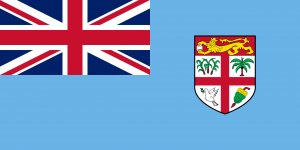Language/Fijian/Vocabulary/Seasons-and-Months
Seasons and Months in Fijian
In this lesson, you will learn the Fijian words for the seasons and months of the year, and understand how the seasons affect the weather and activities in Fiji. Practice using them in sentences and questions.
Seasons
In Fiji, there are two seasons: the wet season and the dry season. The wet season runs from November to April, while the dry season runs from May to October. These seasons can affect the weather and activities in Fiji, so it's important to know which season it is when planning your trip or activities.
Months
Here are the names of the months in Fijian, along with their English translations:
| Fijian | Pronunciation | English |
|---|---|---|
| Janueri | ta-new-re | January |
| Feburari | fem-boo-ra-ree | February |
| Masiti | ma-see-tee | March |
| Epreli | em-pre-lee | April |
| Me | meh | May |
| Juni | joo-nee | June |
| Julai | juh-lie | July |
| Okosita | oh-koh-see-tah | October |
| Novemba | noh-vehm-ba | November |
| Disemba | dee-sehm-ba | December |
It is important to note that there is no "September" or "August" in the Fijian language, so the English names are used instead.
Examples
Here are some examples of how to use the words for seasons and months in Fijian:
- Sa kana ni wai lailai e na siga ni dredre (We drink little water during the dry season)
- Sa qai lako vakamatamata na ika mai na loma ni wai e na vula ni Me (Fish move closer to shore during the month of May)
- Sa siga dravudravua e na gauna ni kadavu (It's stormy during the time of Kadavu)
Practice using these words in your own sentences and questions to reinforce your learning.
Cultural Insights
Many Fijian festivals and celebrations are tied to the seasons and months of the year. For example, the week-long Hibiscus Festival is usually held in August, while Fiji Day is celebrated on October 10th to mark the country's independence. Additionally, during the wet season, it is common for Fijians to practice taro farming and attend church services for harvest blessings.
It's also important to note that weather patterns and seasons can vary depending on which part of Fiji you are in. For example, the Northern parts of Fiji receive more rainfall than the Southern parts, and the highlands can be much cooler than coastal areas.
Conclusion
Congratulations on learning the Fijian words for the seasons and months of the year! With this knowledge, you'll be better equipped to navigate the weather and activities in Fiji, and connect with Fijians during important seasonal celebrations.
Other Lessons
- Common Professions
- Express Surprise
- Fruits
- Telling Time
- Count to 10
- How to Say Hello and Greetings
- Greetings
- Colors
- Animals

